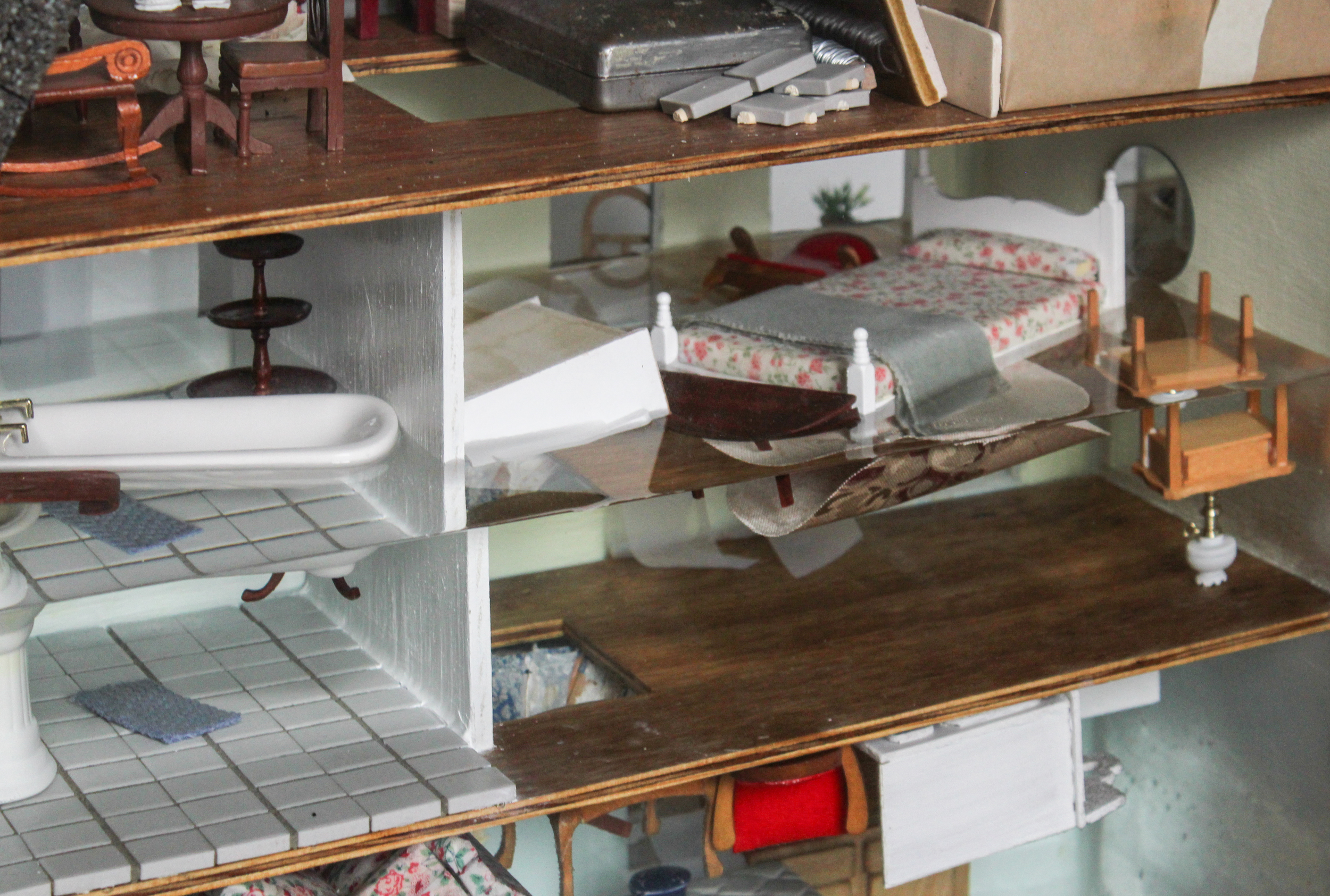
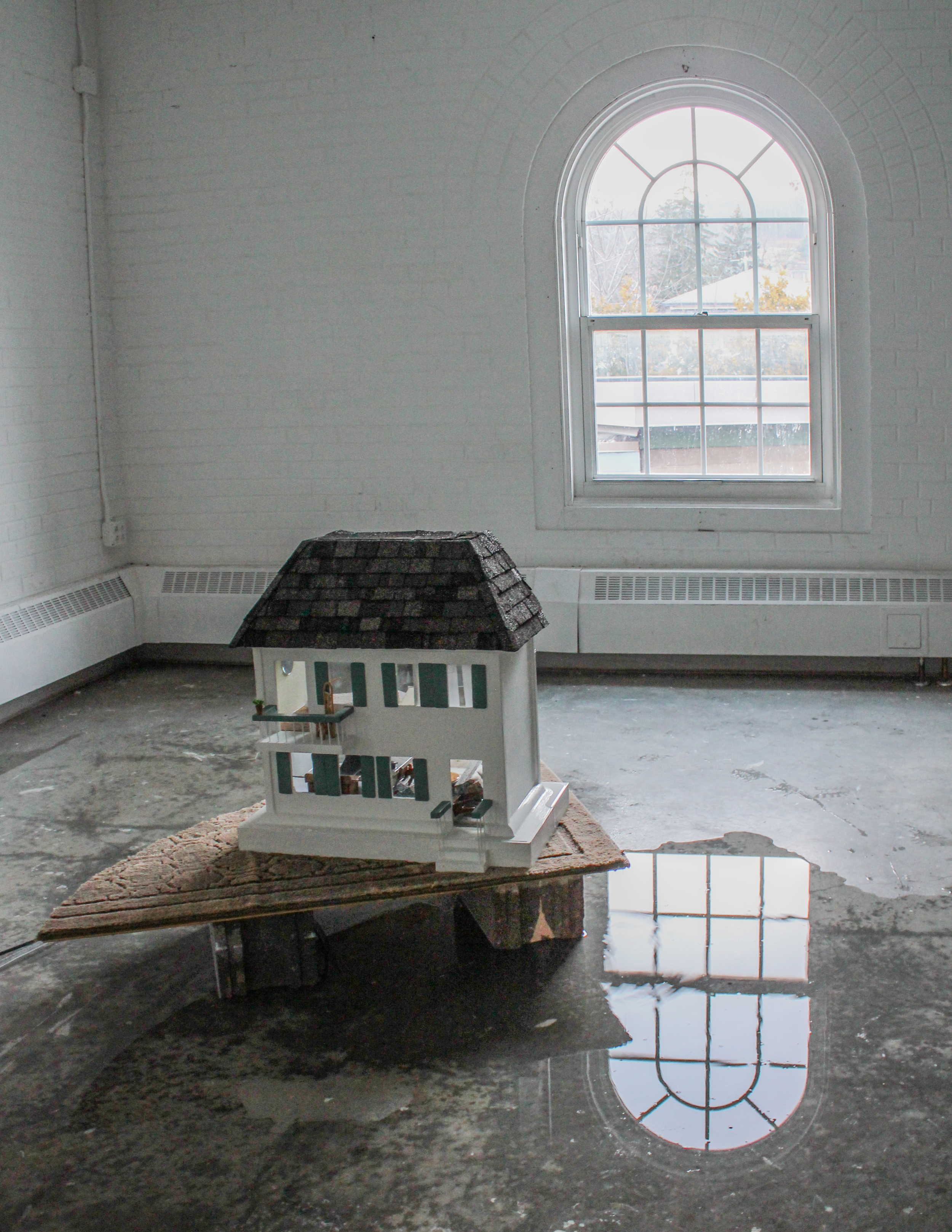
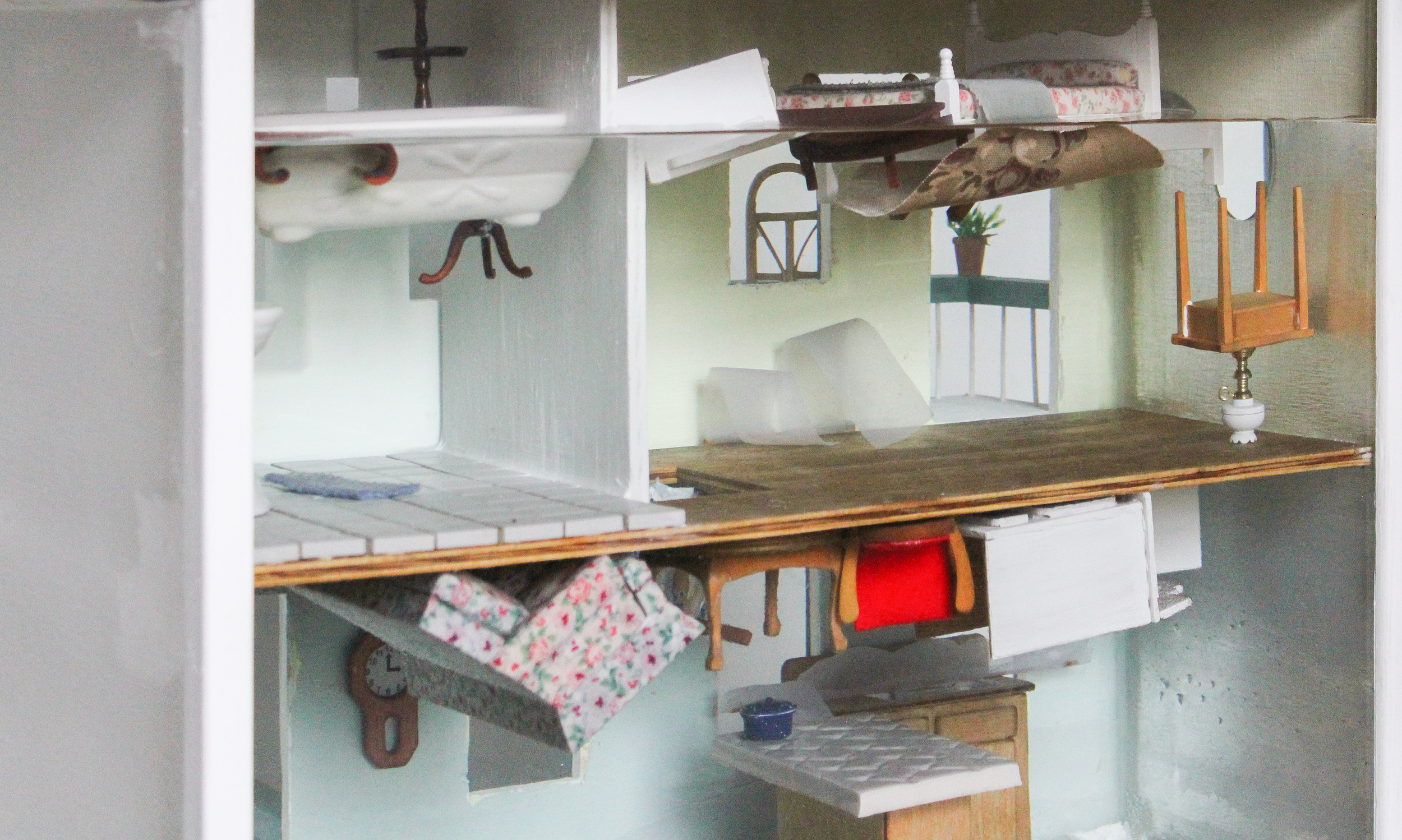
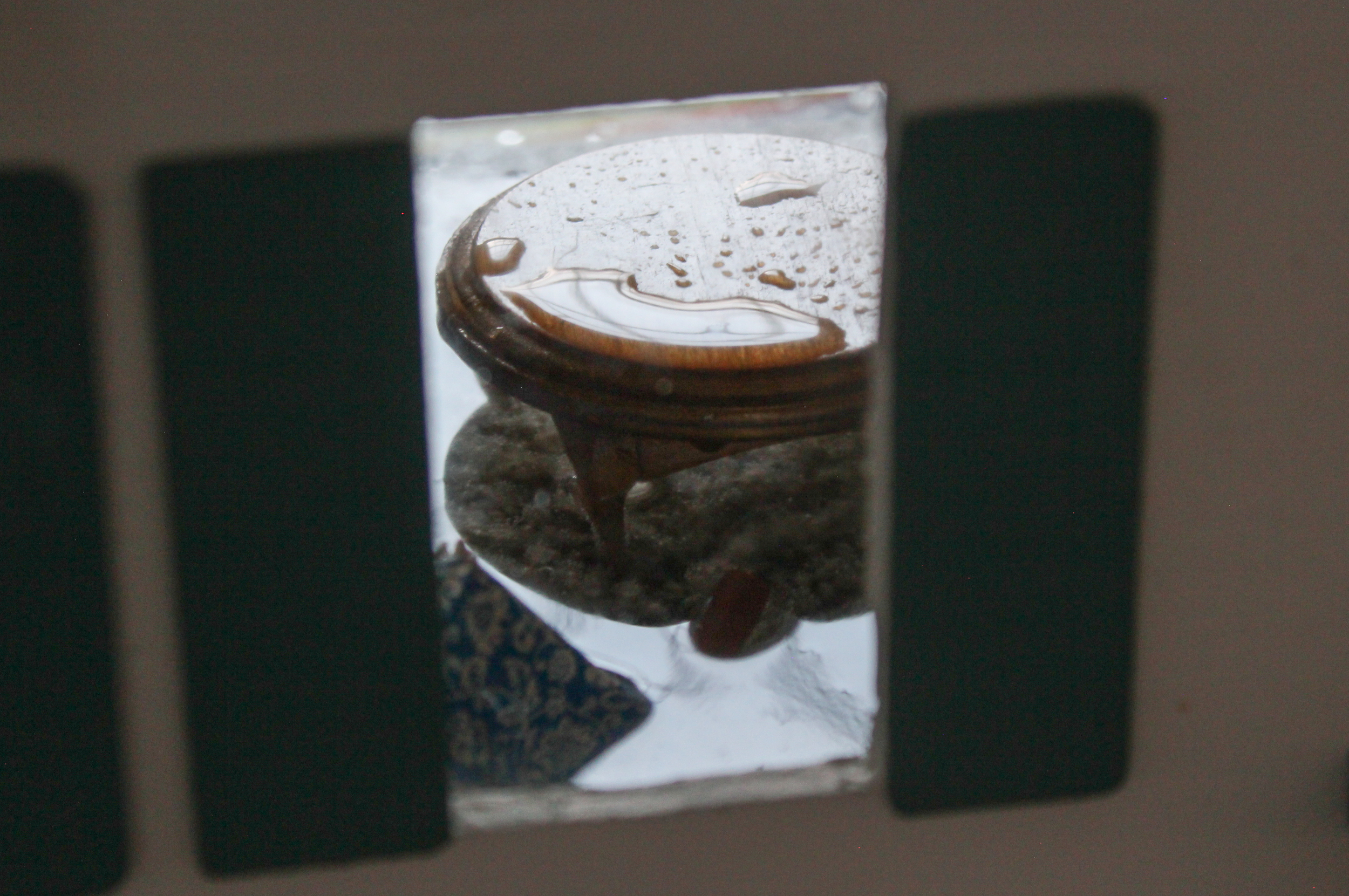

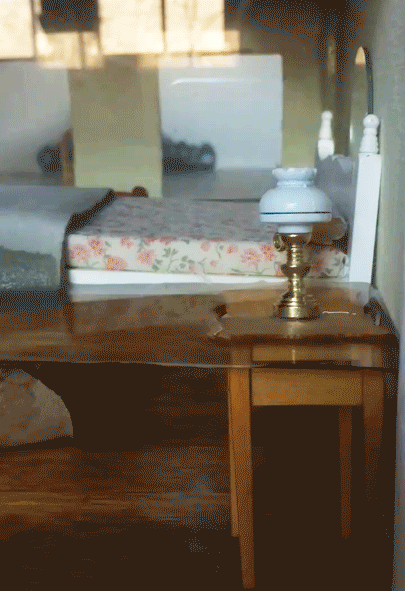
Dreamdrown
water, wood, glass, tile, doll furniture, pump
2015
In Dreamdrown, a child’s dollhouse floods and drains. Water streams into the miniature domestic space from underneath the sink in the kitchen. It crawls across the tile and snakes into the carpet, coating the first floor level. As it rises, the tiny furniture float and dance at the water’s whim. The flooded dollhouse is simultaneously a magical and disconcerting image. The substance that enables the dream-like gravitational behavior of furniture and the strangeness of liquid light also facilitates material decay and leaves everything strewn about in disaster.
Narcolepsy inhibits one’s awareness of their transitions between waking and sleeping, enabling fluid movement between the two. Hindsight can reveal the slight incongruities that indicate a dream state, but often these absurdities are deceivingly subtle. In a similar way, water allows for the continuation of movement, sight, and sound through space much like the atmosphere we live in, but its unique characteristics altar our experience of gravity and inhibit breathing. Narcoleptic nosedives from waking into dreaming resemble the sensation of plunging into water. Mass is allowed to continue, but the experience is distinctly different. In this scene, water floods a fabricated, miniature domestic space, overwhelming childhood with materialized dreams and dysfunction. The home, a refuge for dreaming, is made vulnerable to the perils of misperception involved in sleep/waking disorders.
